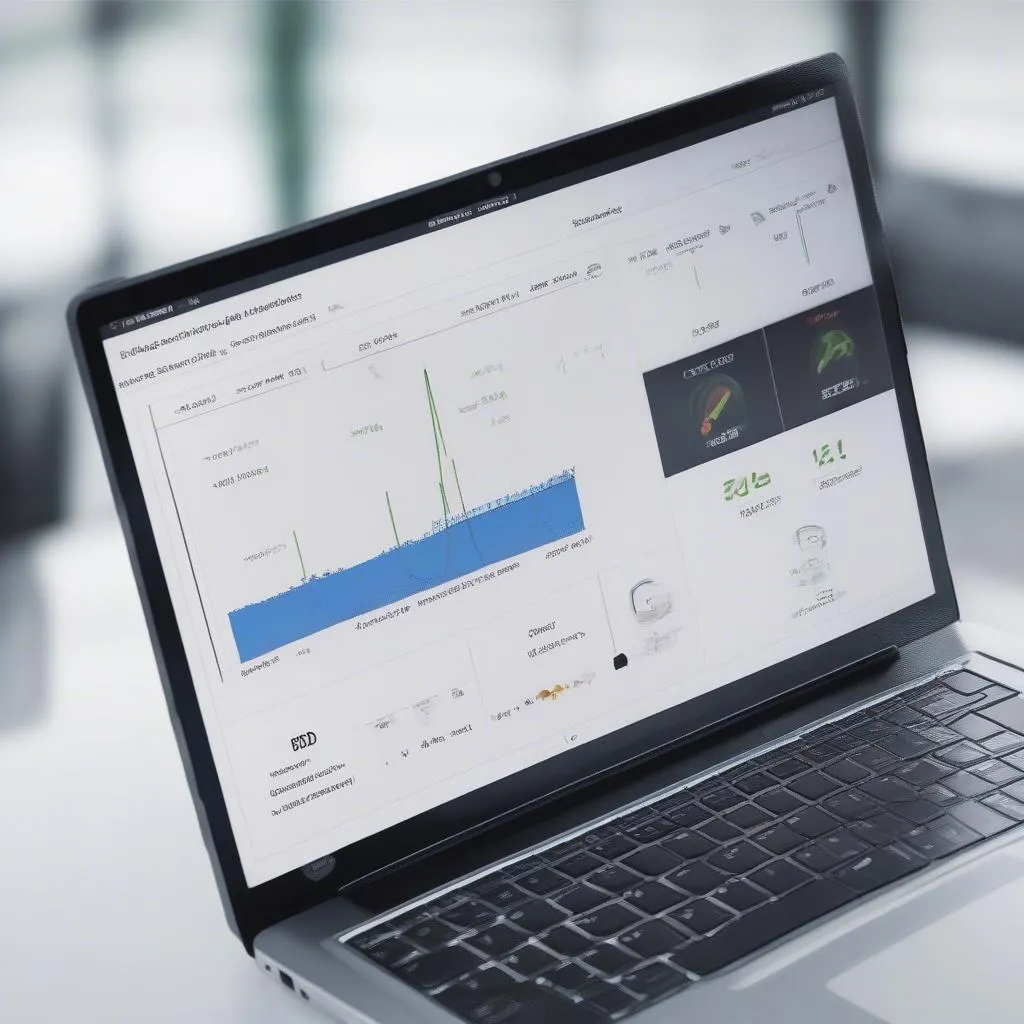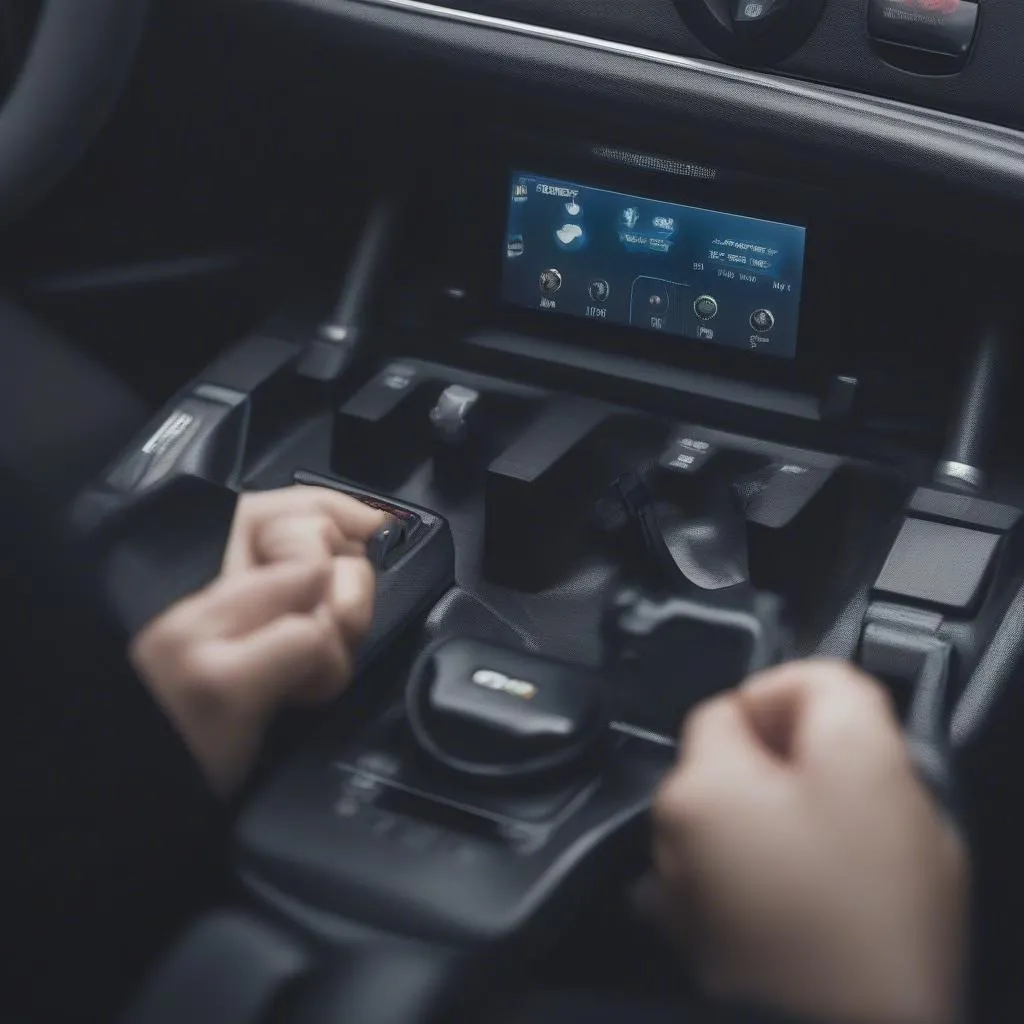Have you ever experienced a strange noise coming from your car engine? Or noticed a drop in fuel efficiency? You might be wondering, “What’s wrong with my car?” Understanding your car’s health is crucial, and an Obd Diagnostic Interface can be your trusty companion in this journey.
What is an Obd Diagnostic Interface?
An OBD diagnostic interface is a tool that allows you to communicate with your car’s onboard computer. It’s like a translator, bridging the gap between you and your vehicle’s complex electronic systems. Imagine you’re talking to your car, asking it, “Hey, how are you feeling?” and the OBD interface helps your car respond in a language you understand.
Why is an Obd Diagnostic Interface Important?
From a Mechanic’s Perspective:
Let’s imagine you’re a mechanic like John, working in a bustling garage in Los Angeles. You’re constantly dealing with different car models and a variety of issues. An OBD diagnostic interface becomes your secret weapon, helping you quickly identify problems. Imagine a client comes in complaining about a rough engine idle. With the OBD interface, you can read the fault codes stored in the car’s computer. This gives you a clear picture of what’s causing the problem, saving you precious time and ensuring you can provide the right solution.
From a Technical Perspective:
The OBD interface is essentially a standardized communication protocol, like a universal language for cars. It allows mechanics and enthusiasts alike to access real-time data about your car’s engine performance, emissions, transmission, and more. This data is invaluable for diagnosing issues, optimizing performance, and ensuring your car runs efficiently.
From an Economic Perspective:
Imagine you own a fleet of delivery trucks. You want to ensure your vehicles are running optimally and minimize downtime. OBD diagnostic interfaces can help you achieve this by monitoring engine performance, fuel consumption, and other important parameters. By detecting issues early, you can proactively schedule maintenance, preventing costly repairs and ensuring your business keeps moving.
How Does an Obd Diagnostic Interface Work?
The OBD interface connects to your car’s OBD-II port (On-Board Diagnostics II), a standard connector found in most vehicles manufactured after 1996. It’s usually located under the dashboard, near the steering column. Once connected, you can use the OBD interface with specialized software to access the data stored in your car’s computer.
Understanding the Data
The data you can access through the OBD interface is quite extensive, including:
- Engine RPM: Reveals the speed at which your engine is running.
- Fuel Trim: Indicates how much the engine is adjusting fuel delivery to achieve optimal performance.
- Engine Coolant Temperature: Helps you monitor the health of your cooling system.
- Vehicle Speed: Provides real-time information about your car’s speed.
- Fault Codes: These codes are essentially “error messages” generated by your car’s computer, indicating potential problems.
Frequently Asked Questions:
What are the different types of Obd Diagnostic Interfaces?
There are many different types of OBD diagnostic interfaces, each with its own capabilities and features. Some interfaces are designed for specific car models or brands, while others are more universal, compatible with a wide range of vehicles. You can find OBD diagnostic interfaces that are wireless or wired, and they can be used for a variety of purposes.
What are some popular Obd Diagnostic Interfaces?
Some popular OBD diagnostic interfaces include:
- Accurev OBD Diagnostic Interface: [https://techcarusa.com/accurev-obd-diagnostic-interface/]
- Goliath Industry OBD Diagnostic Interface: [https://techcarusa.com/goliath-industry-obd-diagnostic-interface/]
- Kobra OBD Diagnostic Interface: [https://techcarusa.com/kobra-obd-diagnostic-interface/]
How can I find the right Obd Diagnostic Interface for my car?
To find the right OBD diagnostic interface for your car, you’ll need to consider your specific needs and budget. If you’re just looking for a basic tool to read fault codes, a simple, affordable OBD interface may be sufficient. However, if you’re looking for more advanced features, such as live data monitoring or programming capabilities, you may need to invest in a more sophisticated interface.
What are some common Obd Diagnostic Interface software options?
There are many different software options available for use with OBD diagnostic interfaces. Some popular software options include:
- Eobd OBD Diagnostic Interface Software: [https://techcarusa.com/eobd-obd-diagnostic-interface-software/]
Can I use an Obd Diagnostic Interface for performance tuning?
Yes, some OBD diagnostic interfaces can be used for performance tuning. They allow you to adjust parameters like fuel-air mixture and ignition timing, potentially improving your car’s performance. However, it’s important to remember that performance tuning can be complex and can affect your car’s warranty. It’s always best to consult with a qualified mechanic or tuner before making any modifications.
Are Obd Diagnostic Interfaces legal?
Yes, OBD diagnostic interfaces are legal and widely used in the automotive industry. In fact, some countries require car manufacturers to provide access to their OBD-II port for diagnostic purposes.
Conclusion:
An OBD diagnostic interface can be an invaluable tool for car owners and mechanics alike. It provides access to vital information about your car’s health, enabling you to diagnose problems, optimize performance, and ensure your vehicle runs smoothly. By utilizing this technology, you can save money, improve fuel efficiency, and extend the life of your car.
Are you interested in learning more about OBD diagnostic interfaces or have questions about the best options for your vehicle? Let us know in the comments below. And for expert guidance on diagnostics and troubleshooting, feel free to contact our team for 24/7 support on Whatsapp: +84767531508.
 OBD Diagnostic Interface Tool
OBD Diagnostic Interface Tool
 OBD Diagnostic Interface Software
OBD Diagnostic Interface Software
 OBD Diagnostic Interface Port
OBD Diagnostic Interface Port